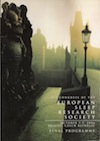Accueil > European Sleep Research Society > 2004 - Prague > Continuous EEG Recording Iterative Sleepiness Tests
 Continuous EEG Recording Iterative Sleepiness Tests
Continuous EEG Recording Iterative Sleepiness Tests
dimanche 14 novembre 2010, par
CUGY Didier, PATY Jacques
Introduction :
MSLT and MWT Tests are well-known for the evaluation of capacity of waking and sleeping. These tests which are mainly performed in sleep-labs by well-trained technicians are highly time and cost -consuming. Genton & al described in 1995 an alternative for the diagnosis of narcolepsy-cataplexy by continuous ambulatory EEG monitoring (Neurophysiol Clin. 1995 ;25(4):187-95). We report here the usage of this method in clinical routine.
Material and Methods :
The performance of Continuous EEG Recording Iterative Sleepiness tests follows that of polysomnography. 4 EEG derivations (C3-Cz, C4-Cz, A1-Cz, A2-Cz), 2 EOG (Vertical and Horizontal), 2 EMG, (Chin, Leg,), 1 EKG (D1), light signal are continuously recorded on a MICROMED BrainSpy MS40P recorder with a 64Hz sampling frequency. A sleep practitionner using Rechtaffen & kales rules (EEG from C4-A1 and C3-A2) visually scored the recordings on a microcomputer. Four sleepiness tests are performed during recording at 9:00 am, 11:30 am, 14:00 pm and 16:30 pm. In each test a nurse lets the patients attempt at napping for 20mn in a dark sleeping-room. At the end of the period the nurse wakes up the patient, opens the shutters, and she fills up a stanford sleepiness scale.
In each record sleep latency, the total duration of sleep and REM during and apart from test are calculated. Results are analysed under the ICD 10 Sleep Diagnoses, the sleepiness ESS scale , the asthenia ADA scale (Ann Med Psychol. 1984 Jun ;142(6):862-5), and the depression Q2DA scale (J Affect Disord. 1991 May-Jun ;22(1-2):55-64). A Component Principal Analysis is carried out on these variables. The diagnosis of Narcolepsy is finally confirmed by HLA phenotype DR15-DQ6.
Results :
200 patients were recorded from 2 Feb 2002 to 21 Feb 2004. This method is well accepted by patients. All the records where visually scored. All patients recorded have Sleepiness score higher than 10 or Asthenia score higher than 15. As reported in Genton article the presence of sleep latency lower than 10mn and the REM sleep are significantly (p<0.001) associated with Narcolepsy and with the total duration of sleep. In this case the probability of narcolepsy is higher than 65% regardless clinical symptoms. Component Principal Analysis explain data variance by mean of 3 factors : 1/ Sleep Latency, total duration of sleep and REM sleep ; 2/ total duration of REM Sleep, ADA, Q2DA scores ; 3/ Sleep Latency, ESS score.
Conclusion :
Continuous EEG Recording Iterative Sleepiness Tests is useful for clinical practice and diagnosis of Narcolepsy. This method also provides more information on vigilance organisation during the recording period. This will be also useful for evaluation of chronobiological pathology.